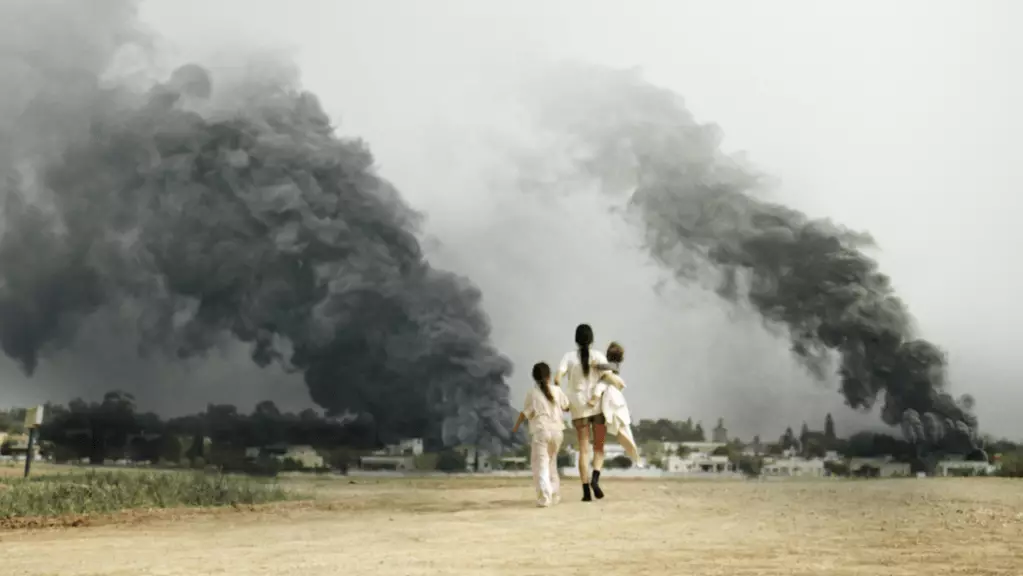In a world brimming with conflicts and unrest, storytelling emerges as a vital conduit for understanding complex tragedies. Recent efforts, such as the acclaimed series “Red Alert,” exemplify how media can transcend mere entertainment to serve as a mirror to society’s resilience and its capacity for empathy. By chronicling the devastating Hamas attacks on Israel — a brutal episode marked by loss, chaos, and heroism — these narratives allow global audiences to confront uncomfortable truths while fostering a deeper awareness. They underscore that history’s wounds are not just moments frozen in time but living stories that shape our collective consciousness and call us to reflection.
Authenticity as a Double-Edged Sword
Producing a series rooted in real tragedies presents immense challenges. The creators of “Red Alert” aim for authenticity, crafting a narrative that captures the horror and heroism with meticulous accuracy. Yet, this pursuit of truth can be fraught with ethical dilemmas—how to honor victims without sensationalizing their suffering? While cinematic fidelity is essential, it must be balanced with sensitivity and respect for those affected. The series’ creators and production team face the demanding task of portraying harrowing scenes without diminishing human dignity, a balancing act that tests the limits of storytelling integrity. When done well, such works have the potential to humanize victims and dispel stereotypes, broadening understanding beyond headlines.
The Global Impact and Political Tensions
The screening of “Red Alert” signifies more than cultural storytelling; it becomes a statement against censorship and political suppression. Paramount’s decision to release the series internationally demonstrates a commitment to open dialogue, even amid rising tensions and calls for boycotts. The entertainment industry’s stance—advocating for artistic freedom—serves as a reminder that stories should not be silenced due to political pressures. This act of defiance embodies a larger fight for free expression, emphasizing that art and journalism are powerful tools for empathy, enlightenment, and ultimately, societal change. Yet, resistance to censorship often invites controversy, forcing audiences to reckon with the discomfort that truthful storytelling can evoke.
Beyond the Screen: The Ethical Responsibility of Artists
While narratives like “Red Alert” amplify voices and shed light on ongoing conflicts, they also reinforce a profound ethical responsibility for creators. Artists bear the weight of representing real suffering with honesty while avoiding exploitation. In a time where misinformation and sensationalism are rampant, filmmakers and writers must navigate a moral landscape that prioritizes truth, respect, and healing. Furthermore, encouraging diverse perspectives and authentic voices—especially those directly affected by crises—is crucial to prevent narratives from becoming one-dimensional or biased. True storytelling intertwines fact with empathy, turning viewers into witnesses and advocates for change.
Inspiration Through Resilience
At its core, stories of tragedy often serve as catalysts for resilience and hope. When audiences witness acts of heroism and community solidarity amidst chaos, it ignites a collective sense of strength and perseverance. Films like “Red Alert” do more than recount horror; they inspire action and compassion, reminding us that even in the darkest hours, human spirit endures. Such media acts as a mirror reflecting our capacity for kindness and courage, encouraging society to confront injustices and work toward a more compassionate future. Ultimately, these narratives foster dialogue that can break taboos, challenge ignorance, and promote a shared understanding that transcends borders.
Note: Critically, it is essential to recognize the influence and responsibility of media in shaping perceptions of complex events. While powerful storytelling can foster empathy and awareness, it can also risk oversimplification or bias if not handled with care. The enduring challenge lies in balancing artistic expression with ethical integrity, ensuring that stories serve as catalysts for understanding rather than division.

